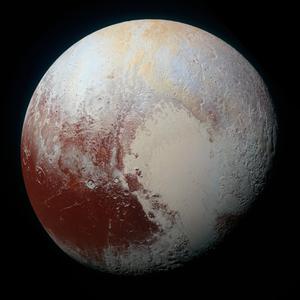Glossary term: Kuiper Belt
Description: The Kuiper Belt is a band of small, icy objects in the outer Solar System mostly lying beyond the orbit of Neptune. Most objects are found at distances of 40–48 astronomical units from the Sun.
Objects in the Kuiper Belt are mostly small although several dwarf planets can be found there, including Pluto. Unlike the small bodies and dwarf planets in the asteroid belt, the objects in the Kuiper Belt are mostly made of frozen water, methane, and ammonia.
Related Terms:
See this term in other languages
Term and definition status: This term and its definition have been approved by a research astronomer and a teacher
The OAE Multilingual Glossary is a project of the IAU Office of Astronomy for Education (OAE) in collaboration with the IAU Office of Astronomy Outreach (OAO). The terms and definitions were chosen, written and reviewed by a collective effort from the OAE, the OAE Centers and Nodes, the OAE National Astronomy Education Coordinators (NAECs) and other volunteers. You can find a full list of credits here. All glossary terms and their definitions are released under a Creative Commons CC BY-4.0 license and should be credited to "IAU OAE".
Related Media
Pluto
Credit: NASA/Johns Hopkins University Applied Physics Laboratory/Southwest Research Institute credit link
License: PD Public Domain icons









